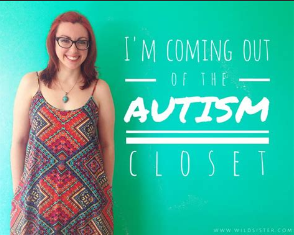Female Autism Traits May Change The Way We Diagnose
Written by SAPL on January 14th, 2019 in Science and Technology.
Francesca Happé, noted researcher on autism, has said:
“Research on autism has systematically neglected and excluded women and girls—researchers often thought that they’d get so few women that they left them out entirely.”
And that’s just one of the many reasons a seemingly “male” stereotyped syndrome has so few females in its literature.
In an interview with Broadly, the idea of how girls get left out of the autism/Asperger’s sphere is explored in more depth.
“What we think we know about autism is what we know about male autism,” Happé said.
Just like boys and girls have, ahem, different “parts,” they also have different ways of displaying autistic symptoms. Some of these symptoms have recently been assessed further, allowing more girls to “come out of the closet.”
Some of these girls come out a little late–as in mid-life. Such was the situation with Laura James, the op-ed creator of the Broadly article.
“I learned I was autistic in 2015, when I was 45 years old. I had been autistic my whole life, of course—why did it take so long to find that out. If you’re wondering if a girl you know should be considered for autism or even thinking that you yourself might fall under the category, consider these differences between the sexes.
- Cultural representations of autism show males or nerdy boys (maybe you should be sexblind and place your little girl in their place).
- Boys tend to stereotypically be fanatics about science and tech. Girls may be fanatics about regular things that other girls talk about.
- Tests and diagnostic scores that were developed were done so from male-based phenotypes (which included traits like #1 and #2).
As more is uncovered on girls with Asperger’s/autism, these will hopefully change. And they are doing so now. Happé is currently using a grant she was awarded to assess the differences in autism due to gender.


